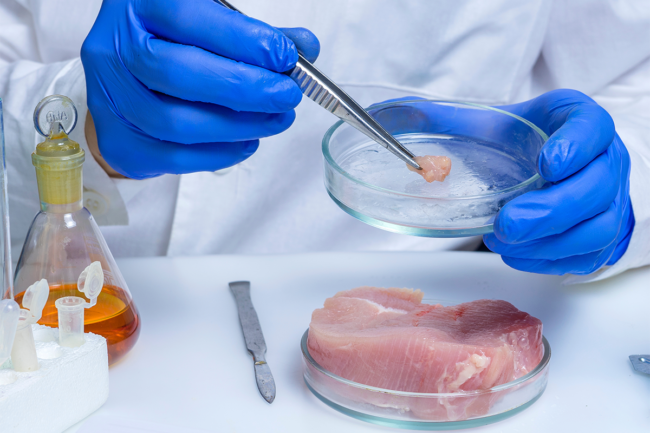ALBANY, NY. – Food safety researchers at the State University of New York at Albany (University at Albany) were awarded $611,000 from the US Department of Agriculture’s National Institute of Food and Agriculture to develop a Salmonella detection test for food that yields results in a matter of hours, according to a post on the university’s website.
The test is designed to produce easy-to-identify, color-based results using tests like those used to measure pH levels or detect viruses like COVID-19. According to the university, the test strip for Salmonella detection will turn purple if positive and red if the sample is negative. The project is focused on Salmonella enteritidis and Salmonella typhimurium, the strains of the pathogen linked to half of the human infections in the United States.
“If successful, the test will reduce the time it takes to detect Salmonella in food from days to hours, making it possible to quickly implement preemptive measures to prevent human illness and lost revenue,” the website said.
“Our proposed research aims to address this issue by developing an ultra-sensitive, nanotechnology-enabled approach for rapid Salmonella detection that can easily be used anywhere, without the need for special instrumentation,” said Mehmet Yigit, co-principal investigator, associate professor in UAlbany’s Department of Chemistry and the RNA Institute, in the university’s post.
Besides threatening public health, outbreaks of Salmonella can also disrupt food supply chains, said co-principal investigator Abdullah Canbaz, assistant professor of Information Sciences and Technology in the College of Emergency Preparedness, Homeland Security and Cybersecurity.
“Leveraging cutting-edge technology, our goal is to contribute to early and precise identification of Salmonella, thereby advancing public health initiatives,” he said. “This system will make it easy for anyone suspecting contamination to test a sample and receive verified results within six hours. For comparison, current methods requiring microbial culturing can take several days.”
The research used to develop the test is a novel detection approach based on nanotechnology and artificial intelligence, instead of microbial culturing or whole genome sequencing, which have traditionally been used to detect pathogens in food.
The proposed diagnostic kit will include pre-filled vials, allowing users to add their sample and induce the chemical reaction to determine if Salmonella is present based on the color of a test tube solution or test strip.
According to the University of Albany, the researchers are also developing an image analysis system, which would integrate machine learning to interpret the color on the nanoarray test strip. This would facilitate automated assistance in test result interpretations and detection.
“This feature will operate in a way similar to certain COVID-19 tests that allow you to take a photo of the test strip with your phone, send it off for analysis, and receive a confirmation as to whether the result is positive or negative,” Yigit said.
“The team’s nano-diagnostic system will also serve as a template for foodborne bacterial detection beyond Salmonella, marking a significant step forward in the field of food safety,” the university said.


